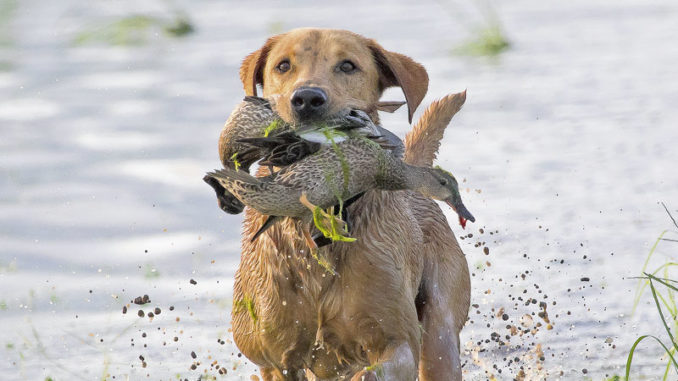
September season offers waterfowl hunters a chance to warm up on speedy birds that arrive early in migration. Here’s how Louisiana pros set up for success.
John Saucier, who owns Sportsman’s Charters in Gueydan, had to leave the duck blind early to settle-up with some clients from Georgia who were hunting teal the last weekend of the early September 2020 season.
The early teal season is culturally popular in the southwestern part of Louisiana and is usually a tune-up for things to come when bigger ducks arrive in November.
We continued to bang away in his absence, eventually getting our 4-man limits of six birds each by mid-morning, amazing for Day 14 of the 16-day season, but typical of what Saucier’s customers had experienced for much of the season. In fact, it had been nothing short of spectacular.
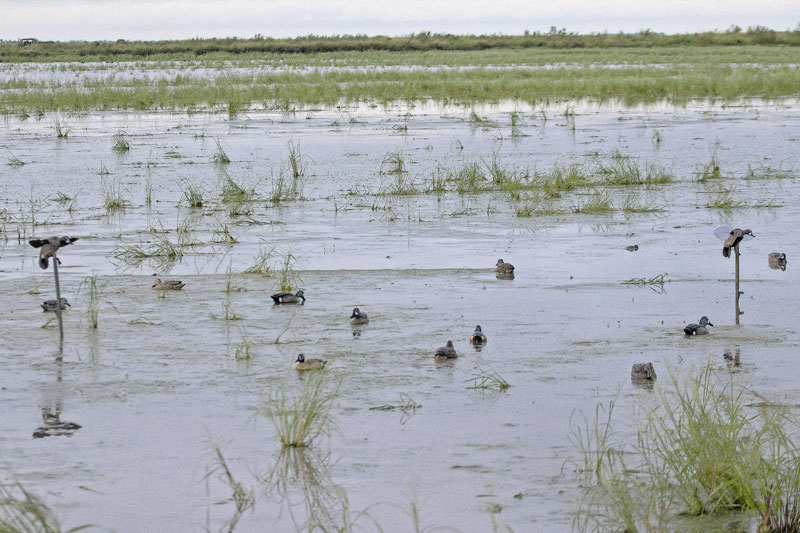
At Saucier’s lodge, where we gathered after the hunt to eat a late breakfast, was a large dry erase board he utilized to keep track of blind assignments each morning. Updated with our total was also a number hard to grasp: 2,357 teal bagged.
Clearly delighted, Saucier said, “It’s been the best season we’ve ever had since I’ve been running the lodge. The most teal I’ve ever heard of taken before this was something around 1,800, and we still have two days to hunt.”
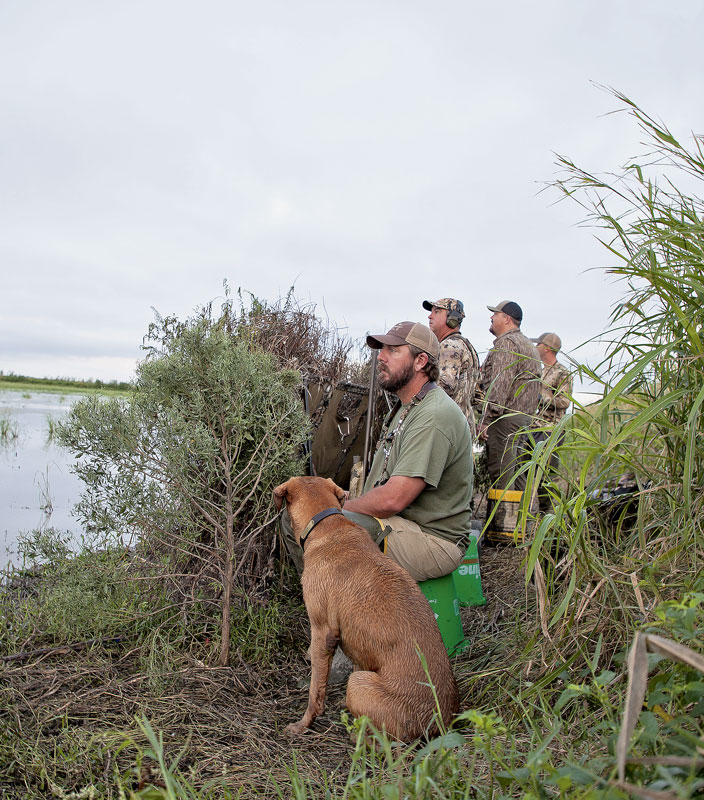
Just days before the season opener, biologists with the Louisiana Department of Wildlife and Fisheries conducted their September aerial survey, which estimated that 202,000 teal were in southwest Louisiana, 16,000 in southeastern Louisiana, and 18,000 on Catahoula Lake — a total of 236,000.
Those were twice the numbers counted in the 2019 survey and four times the 59,000 estimate for 2018. More important, it was 55% higher than the most-recent 5-year average and slightly higher than the long-term average of 227,000.
One thing the aerial survey report pointed out was that marsh habitats had been greatly impacted by hurricane Laura. High water, blocked drainages and vegetation damage from storm surge and salinity were all sighted. As a result, few blue-winged teal were found in the marsh. Instead, large numbers were counted in rice fields around the region.
Just down the road from Sportsman’s Charter, Schuler Dartez, a biologist for the White Lake Conservation Area, also reported a good teal season.
Dartez said, “Overall, it was a very good season, with tons of birds from start to finish.”
Of the nine hunts held on White Lake Conservation Area in 2020, 409 teal were harvested, an average of 4.8 ducks per hunter. Of those, only three were green-winged teal.
In the Southeast, harvest numbers, though much lower, still showed hunters were able to put a few teal in their game bags. On opening day, the hunter participation and harvest summary showed Coastal Wildlife Management Area hunters harvested 2.3 teal per hunter per trip. Atchafalaya Delta WMA hunters averaged 2.7 teal each.
Other good reports from the east came out of Pointe-la-Hache and Myrtle Grove, where Larry Reynolds, LDWF’s waterfowl program manager, said they had excellent hunting all season.
Gueydan, Lake Arthur, Thornwell, Jennings and Welch — even during some of the leanest years — have historically been good for teal. However, these areas continue to change agriculturally, with sugar cane encroaching in a region once dominated by rice. Another change is an increasing number of crawfish ponds. Good for resting areas, they have limited nutrition as a stopover location for blue-wings heading to Central and South America.
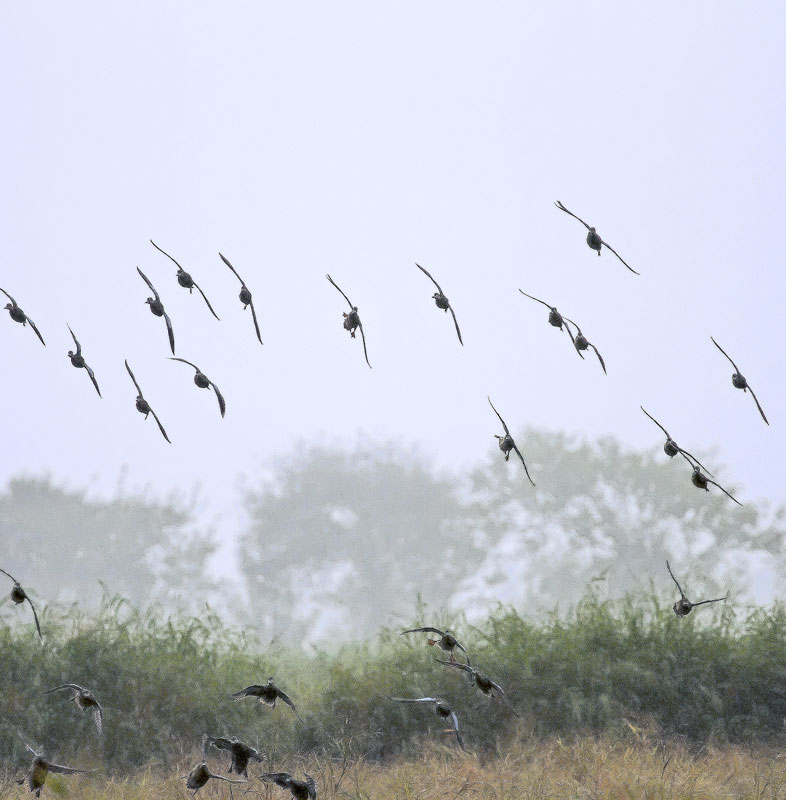
For the second-straight year, the U.S. Fish and Wildlife Service’s annual survey of duck numbers was canceled due to COVID-19. Before the 2020 September teal season, the only state on the Central and Mississippi Flyways that had conducted an aerial survey was North Dakota. It showed plenty of water in ponds and a large breeding population of blue-winged teal. The report was pretty much the only source that prognosticators, hungry for what was happening on the breeding grounds, could reliably hang their hats on.
This year, North Dakota is just the opposite. In the epicenter of the duck factory’s prairie pothole region, reports showed one of the driest early summers on record and a decrease in duck numbers compared to 2020.
Saucier’ guides utilize the same traditional rice field setup most hunters do in southwest Louisiana for teal. Along a levee, they’ll brush up a comfortable blind that blends in with the existing foliage. His guides will make early morning scouting excursions before and during the season, looking for and patterning teal movements, learning what fields they’re using.
Quite often, the hunting is better in the afternoon, Saucier said, and as a result, he’ll adjust and take advantage of the birds’ changing pattern.
Several dozen decoys are typically put out, along with a few spinning-wing teal decoys for added effect. Throughout the hunt, Saucier and his guides will read what’s going on. If teal are acting finicky and won’t decoy, he’ll adjust by pulling the spinning-wing decoys.
It’s not uncommon for September teal hunts in this region to be finished by sunrise. On a hunt with Saucier the last weekend of the 2020 season, teal didn’t pile in like they did on opening weekend. Nonetheless, the pace was a whole lot more fun; we were able to work singles, pairs and smaller bunches, giving us some steady, extended action going into mid-morning, while still allowing us to get our limits.
With waterfowl hunting being what it is in Louisiana the past several years, where blue-winged teal aerial estimates have been up and down, sometimes it’s better to engage an outfitter. The agricultural areas around Cameron, Jefferson Davis, and Vermilion parishes are great places to start when looking for a place to make a hunt or two.
The 2021 early teal season opens Sept. 11 and runs through Sept. 26. A big thing about the early season is it is a harbinger to the regular waterfowl season in November. Big numbers of teal with good shoots and easy limits in September always get duck hunters excited about what’s to come.
In the coming weeks, hopefully, social media and online websites will be loaded with excitement and photos of blue-winged teal.
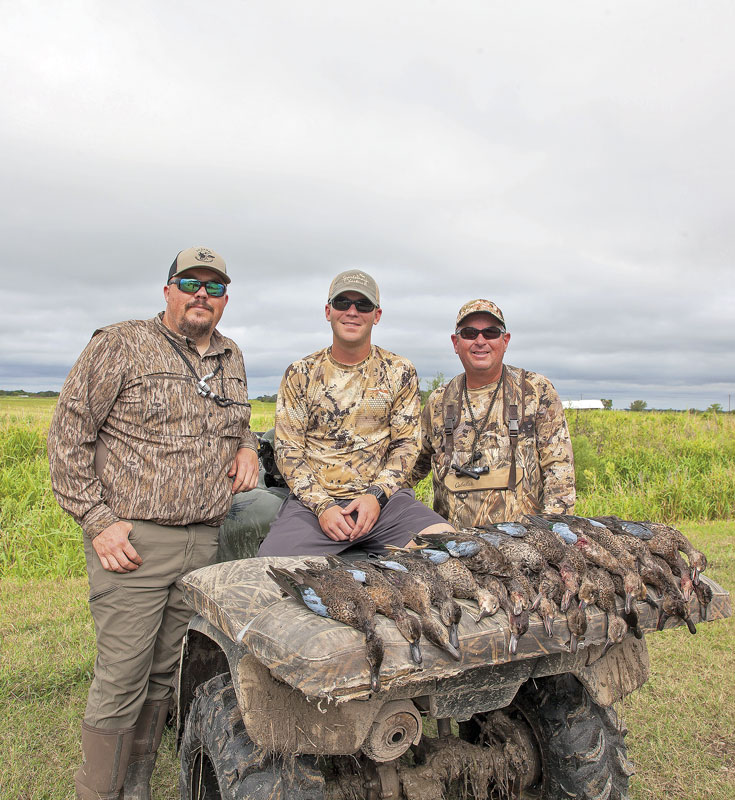
Coastal public areas for DIY guys
If you prefer to hunt without a guide or outfitter, plenty of public land is available across Louisiana where success can be achieved if you’re willing to put in the work. Promising coastal WMAs include:
- White Lake Wetlands Conservation Area – lottery only;
- Atchafalaya Delta WMA;
- Pointe-Aux-Chenes WMA;
- Salvador WMA;
- Pass-A-Loutre WMA
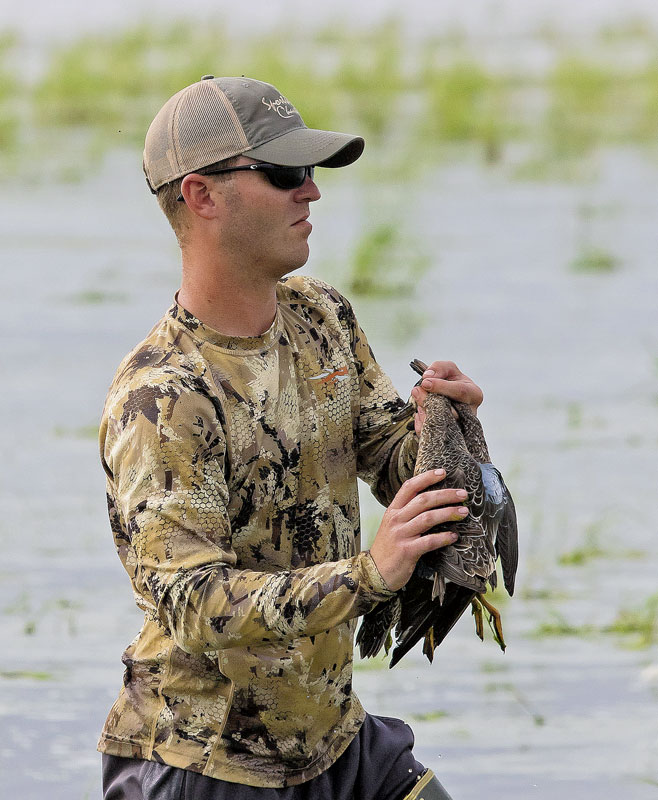
Things to be sure to bring
During Louisiana’s September teal season, it’s still very warm, by mid-day often downright hot. Additionally, the mosquitos can be horrible. Here are a few things you should be sure to bring on your rice field teal hunt.
- Mosquito repellent;
- Bottled water;
- Rain gear or poncho;
- Hunting license with state waterfowl endorsement and HIP survey;
- WMA permit if hunting on public lands;
- Federal duck stamp, signed on the back;
- Plenty of non-toxic shot —Nos. 4 and 6 work best;
- An ice chest to keep your birds cool on the way home.